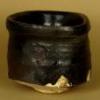-
Posts
6,786 -
Joined
-
Days Won
10

cabowen replied to watsonmil's topic in Tanegashima / Teppo / Hinawajū

cabowen replied to Peter Bleed's topic in General Nihonto Related Discussion

cabowen replied to Peter Bleed's topic in General Nihonto Related Discussion

cabowen replied to CurtisR's topic in General Nihonto Related Discussion

